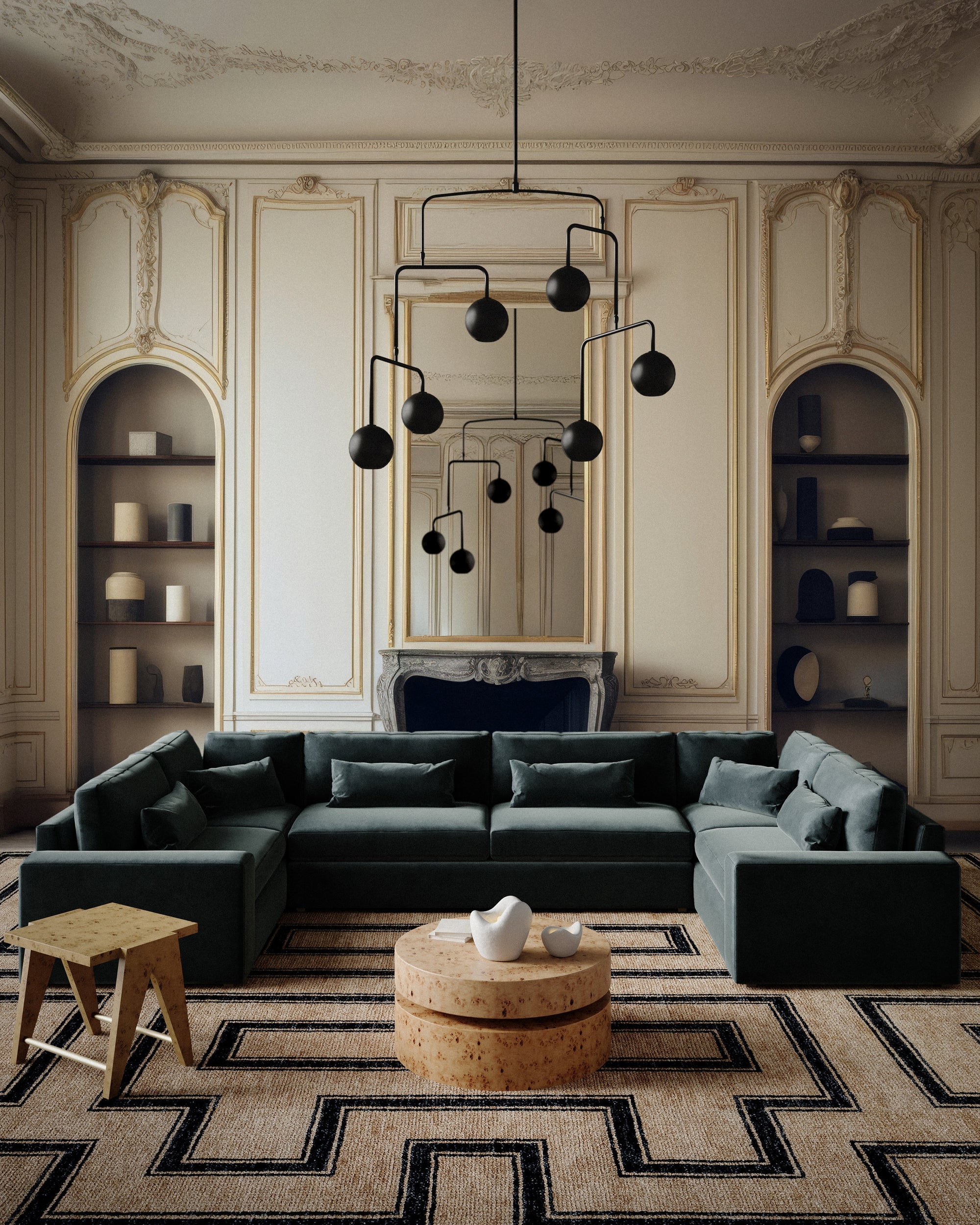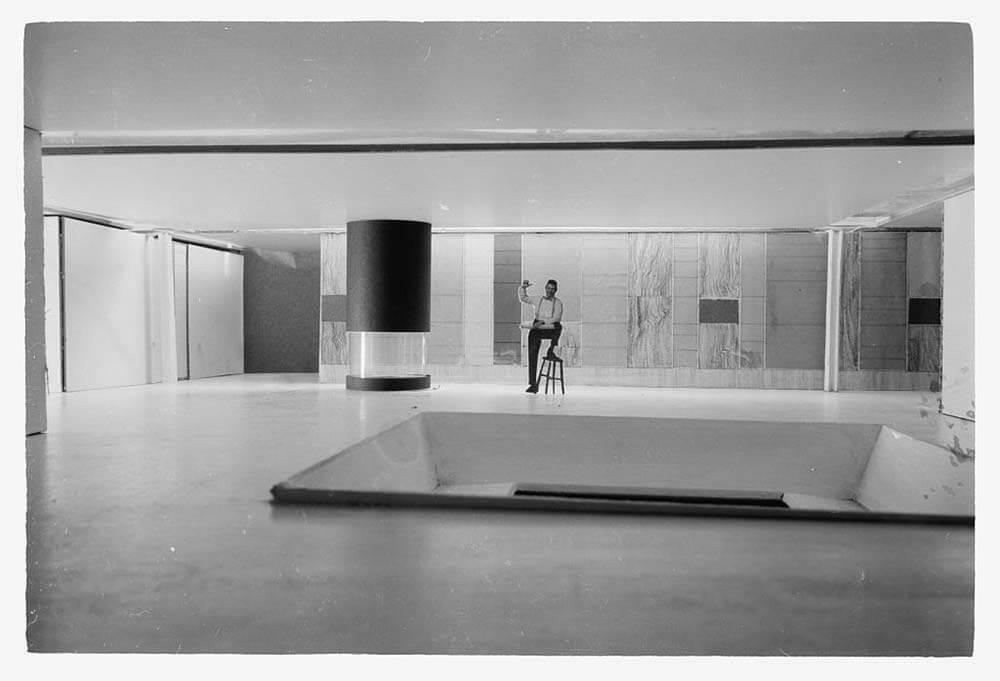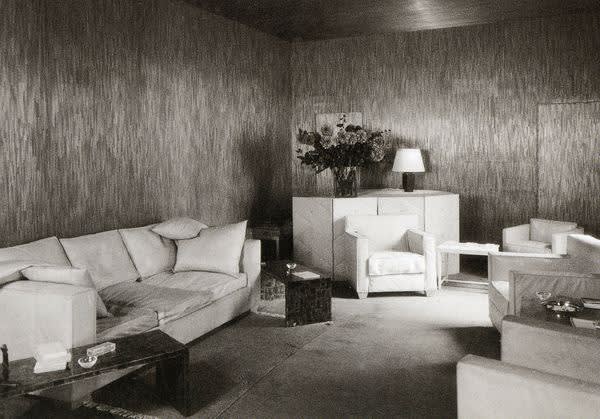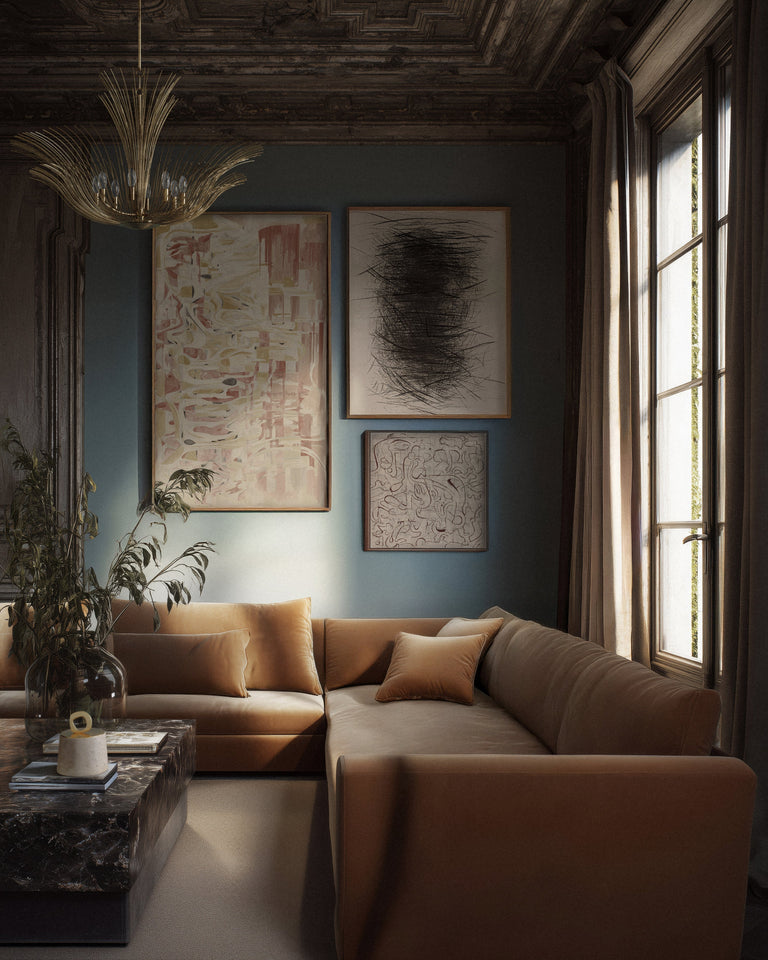
The New Salon: A Brief History of the Conversation Pit
In an age of endless scroll and digital disconnection, the most radical act might be the simplest: gathering people in a circle and letting conversation flow. This wasn't always a revolutionary concept. For decades, forward-thinking architects and designers understood that meaningful connection required intentional space—rooms designed not just for function, but for the sacred art of human dialogue.
The Visionary Origins: When Architecture Served Connection

Photo above gifted by the legacy of photographer Balthazar Korab
Long before open floor plans became the default of modern living, architect Bruce Goff introduced something far more intentional: the first modern conversation pit in 1927 Tulsa, Oklahoma. But it was Eero Saarinen, alongside designer Alexander Girard, who transformed this concept into an icon with the Miller House in 1952.
Saarinen understood what few architects of his era grasped: that the most sophisticated homes weren't about showing off space, but about creating intimacy within grandeur. Inspired by the open-yet-contained philosophy of Japanese architecture, he carved zones for connection from the sprawling modernist canvas. His vision culminated in the striking red sunken lounge at the 1962 TWA Flight Center—an architectural ode to human gathering that made every passenger feel part of something larger than themselves.
These weren't mere seating arrangements; they were spatial choreography. The sunken format naturally drew people together, creating equality among participants and fostering the kind of eye-level conversation that transforms acquaintances into confidants.
The French Foundation: Jean-Michel Frank's Geometric Mastery

While Saarinen was revolutionizing architectural space, Jean-Michel Frank was perfecting the furniture that would fill it. Working in 1930s Paris, Frank developed what would become the vocabulary for sophisticated modular seating: clean rectilinear lines, generous proportions, and an almost mathematical approach to comfort.
Frank's genius lay in his understanding that true luxury wasn't about ornament—it was about proportion, materials, and the subtle alchemy that transforms simple forms into objects of desire. His geometric precision created seating that was both sculptural statement and invitation to linger. Each piece could stand alone as art, yet function seamlessly within larger compositions.
This French approach to modular design would prove prophetic. Frank recognized that modern living required furniture as flexible as the lives it served—pieces that could adapt to intimate dinners or grand gatherings, that could grow with families and shrink with relocations.
The Democratic Revolution of Sunken Seating
What made conversation pits truly revolutionary wasn't their aesthetic—it was their social philosophy. Traditional living rooms enforced hierarchy: the best chair for the host, lesser seating radiating outward in order of importance. Conversation pits abolished this structure entirely.
In a properly designed sunken space, everyone sits at the same level, faces inward toward the group, and participates as equals. It's democracy made spatial—a physical manifestation of the ideal that good conversation belongs to everyone, not just those with the best seats.
This egalitarian approach reflected broader cultural shifts of the mid-century period. As social barriers relaxed and entertaining became less formal, homes needed spaces that could facilitate genuine connection rather than performative hosting. The conversation pit became the architectural expression of this new social contract.
Beyond Nostalgia: Why Conversation Pits Matter More Than Ever
Today's revival of conversation pit aesthetics isn't mere nostalgia—it's necessity. In an era when digital screens compete for every moment of attention, creating physical spaces that encourage face-to-face interaction has become urgent design work.
Modern conversation "pits"—whether achieved through sunken architecture or carefully composed modular seating—serve the same essential function they did in Saarinen's day: they create intimacy within larger spaces, foster equality among participants, and make gathering feel intentional rather than accidental.
The most successful contemporary interpretations understand that the magic wasn't in the sunken floor—it was in the spatial relationships, the eye-level engagement, the way carefully arranged seating could transform a room into a stage for meaningful exchange.
The Modular Renaissance: Flexibility Meets Sophistication
Contemporary living demands furniture that can adapt as fluidly as our lives. This is where the modular approach pioneered by designers like Frank finds its most relevant expression. Today's best modular collections combine his geometric precision with contemporary understanding of comfort and flexibility.
Great modular seating shares certain characteristics: pieces that work beautifully alone but compose seamlessly into larger configurations, proportions that feel generous without overwhelming smaller spaces, and construction quality that supports both intimate conversations and large gatherings.

Materials and Craftsmanship: The Tactile Foundation
Like all exceptional furniture, conversation-worthy seating is distinguished by its materials and construction. The best examples use premium fabrics that invite touch, frame construction that supports years of gathering, and cushioning that maintains its shape through countless conversations.
This is where handcrafted construction proves essential. Machine-made furniture might look similar, but it can't replicate the subtle details that make seating truly inviting: the perfect tension in upholstery, the precisely calibrated comfort that supports both quick chats and marathon discussions, the quality that improves with age rather than deteriorating.
Creating the New Salon: Conversation as Luxury
What we're witnessing isn't just a furniture trend—it's the recognition that conversation itself has become a luxury good. In a world of constant distraction, the ability to gather people for meaningful dialogue represents the ultimate sophistication.
The new salon begins in your home, with seating designed to spark dialogue and gather people close. It's about creating zones for intimacy within grand architecture, making everyone feel equally welcome, and elevating the simple act of sitting together into something approaching art.
The Lacroix Collection: Modular Mastery for Modern Living
Our Lacroix Collection revives this essential spirit for contemporary homes. Inspired by Jean-Michel Frank's iconic geometry, each piece is defined by clean rectilinear lines and deep, generous proportions that invite lingering. Like Frank's original designs, these aren't just beautiful objects—they're instruments of connection.
Designed for ultimate versatility, the collection includes multiple modular components that configure into custom sectional sofas of any size or scale. Whether creating an intimate conversation corner or a grand gathering space, the Lacroix system adapts to your vision while maintaining the sculptural simplicity that makes each piece worthy of the finest interiors.
Handmade by skilled artisans in North Carolina, each component represents our commitment to the kind of construction quality that supports generations of gathering. With sink-into comfort and architectural presence, the Lacroix Collection offers a tailored foundation for the new salon—wherever you choose to create it.
Because conversation doesn't just fill a room—it elevates life.
Discover our complete Lacroix Collection, where mid-century vision meets contemporary craftsmanship. Each modular piece represents our commitment to furniture that serves not just comfort, but the art of human connection.
Recent Edits





